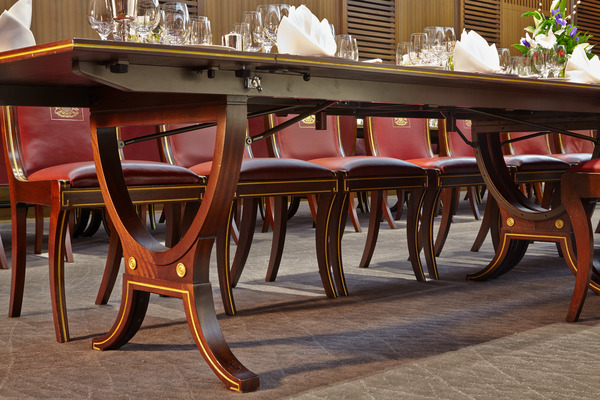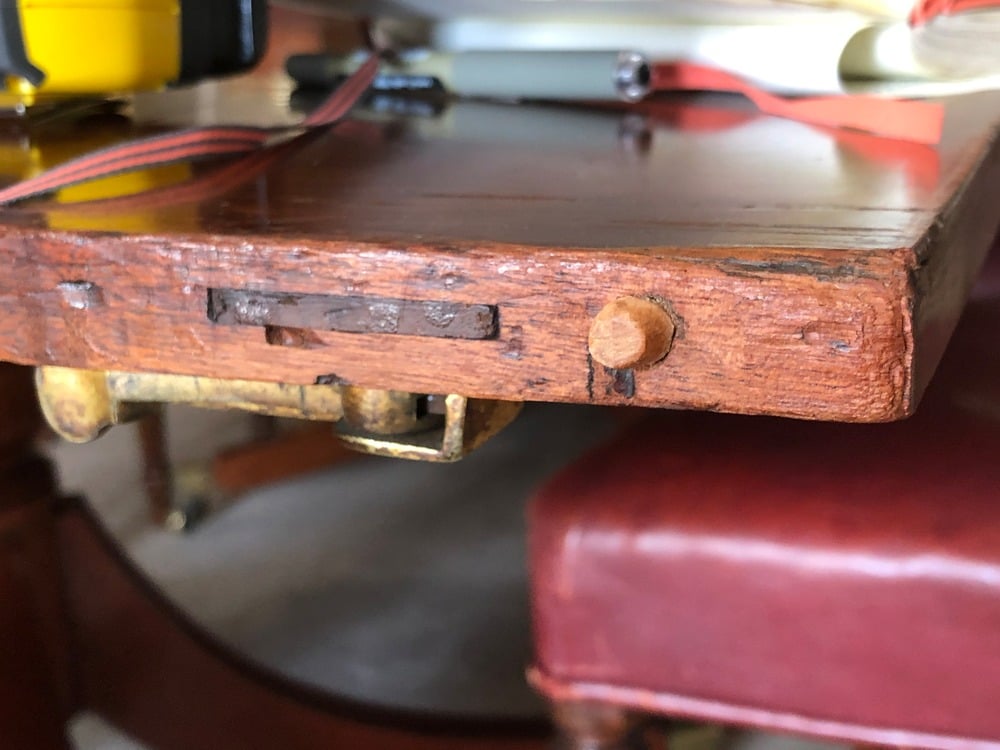Truly great craft has never strayed beyond the bounds of the authentic; the very best craftspeople work with intention and integrity, keeping quality, durability and longevity in mind as they design and create heirlooms of the future. Inherent to this method of design is not only the foresight of future-proof manufacturing but also the mastery of objects from the past via sustainable adaptive reuse, or the reworking of furniture to make it useful and relevant for our modern times.
The benefits of adaptive reuse furniture
The adaptive reuse concept prioritises the conversion of older furniture into new products that perform their functions effectively for modern use. It is a sustainable practice as it limits the potential carbon emissions caused by further manufacturing in favour of making small but impactful changes to the original pieces of furniture. From the environmental and an economical perspectives, in this sense, the benefits of adaptive reuse furniture are clear.
From the perspective of conservationists, managing bodies, charities and companies across the world working to preserve our architectural and design heritage in a very literal sense, adaptive reuse can be seen as a vehicle to maintain the essence of the furniture and the buildings that communities have enjoyed for hundreds if not thousands of years. This more nuanced benefit of adaptive reuse furniture involves the argument that the continuation of these pieces through time preserves the memory and the personality of the furniture and the building in which it is used. Adapting pre-existing furniture for modern use demonstrates a dedication to the historic objects that were intended for long-term use within the canon of authentic craft.
Adaptive reuse furniture in action
At Luke Hughes, we develop furniture with these ideas of craft and integrity at every stage of the process. Working with our clients across many sectors, but most notably ecclesiastical and educational establishments, the furniture we produce is unique and made to order to the specifications of each building. In many cases, clients approach us with adaptive reuse furniture projects, requiring not only the knowledge of the way the furniture was made originally but also the skills to bring it up to standard for high performance in the 21st century.
One example of adaptive reuse furniture in our educational projects is our work with Trinity Hall, Cambridge. In 2015, we were commissioned by the University of Cambridge’s oldest college to redesign the dining hall furniture as part of a wider refurbishment project. Our objective was to retain the intimacy of the space while ensuring the catering team could move the tables around more easily. We adapted the original tables to make them demountable and movable, allowing the furniture a second lease of life as flexible assets for a range of uses. The dining hall is used for formal and informal dining, lectures and recitals, and also needs to be cleared away for buffet functions. The dining tables hold much sentimental value for both staff and students, so employing the principles of adaptive reuse in this project felt only right and proper.
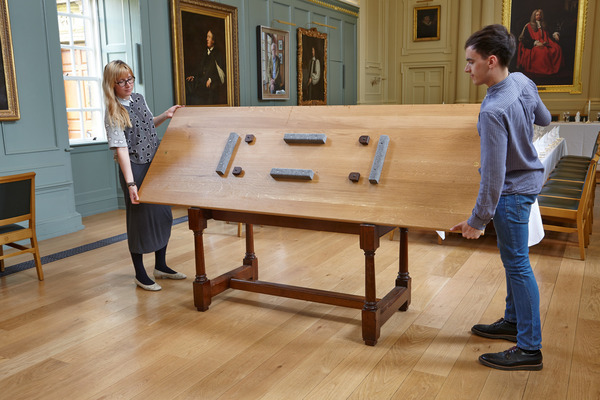
Despite their high quality turned oak legs and perfect seasoning, the dining tables had suffered a century of heavy use. To restore and rethink the dining tables, we knocked them apart, redesigned the bases and repositioned the legs, which were each found to be reusable. Another major change in the adaptive reuse process, second only to the demountable table tops, was to the linking beams between the legs; we fitted a quick-release linking wedge system that enables staff to quickly take down the bases for storage where necessary.
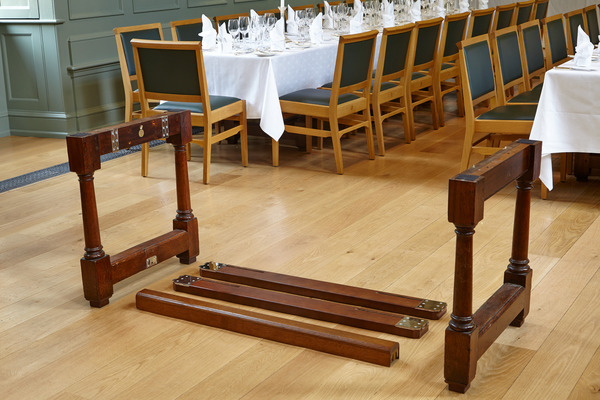 |
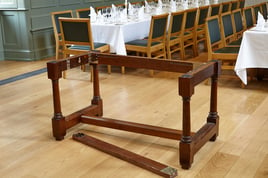 |
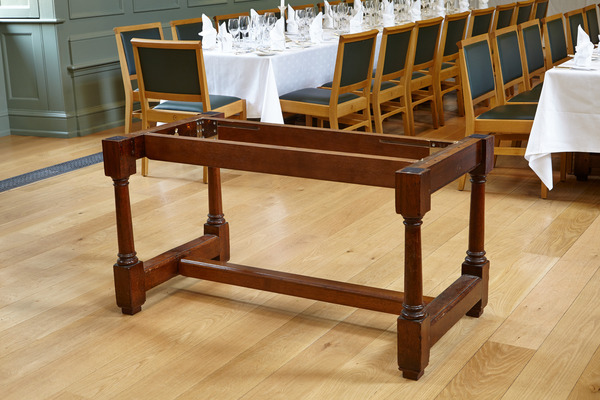 |
 |
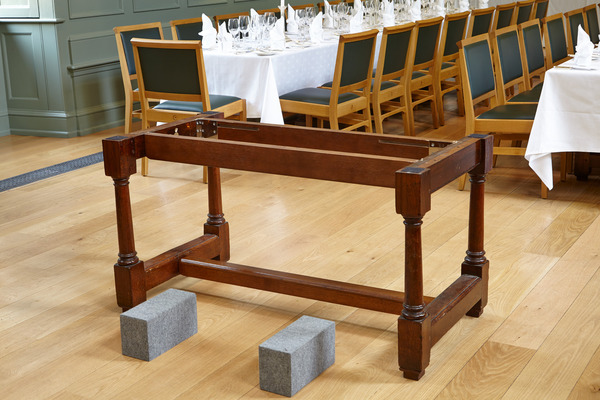 |
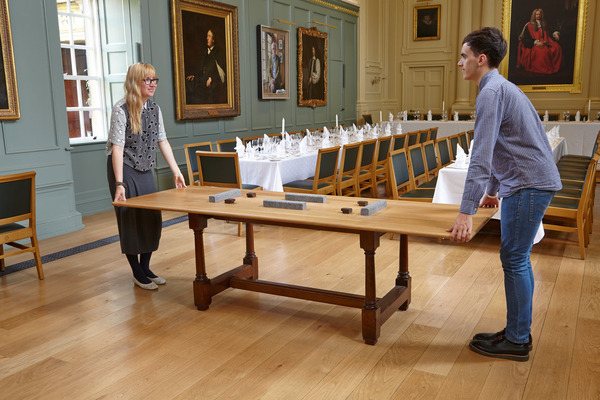 |
Another fantastic example of our adaptive use furniture in action is at Oriel College dining hall. We undertook a major refurbishment of the historical pieces of dining hall furniture, adapting the benches by making them foldable. The brief for our work at the Oxford college dining hall was to ensure this elegant, classical space could be used in far more flexible ways, bringing versatility to the furniture for multifunctional use. The dark, imposing ceiling and the rich panelling command the space, so installing new furniture would have jarred with the historic architecture. This is a fine demonstration of the adaption of old furniture for contemporary use, and of Luke Hughes’ attention to detail when it comes to creating a furniture concept for a setting of such distinction.
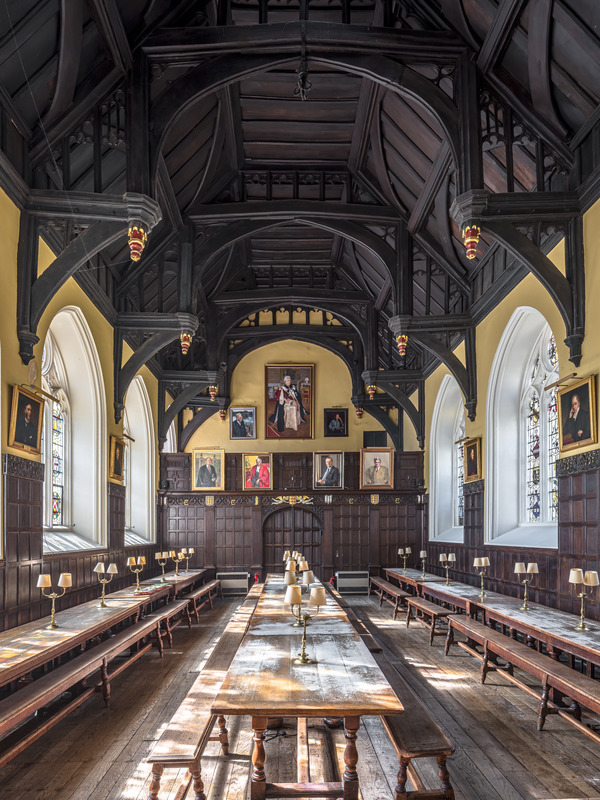 |
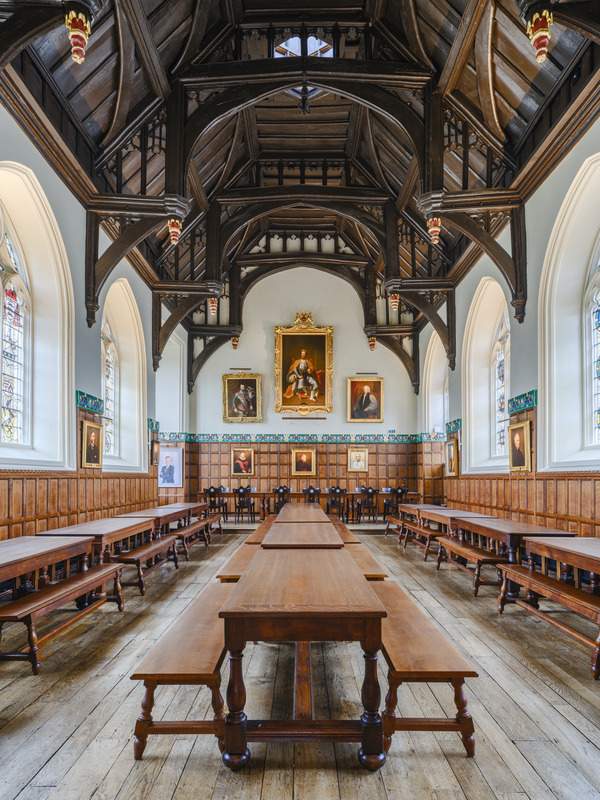 |
A final example is Luke Hughes’ furniture refurbishment work at Leathersellers Hall, where we adapted the original mahogany dining table to be foldable with an innovative, retrofitted folding frame. The original dining chairs were also reengineered and refurbished with a discrete folding mechanism, allowing each chair to be stored when not in use. The chairs were also regilded and reupholstered, and an additional set of 30 new dining chairs were faithfully reproduced to make up a complete set.
